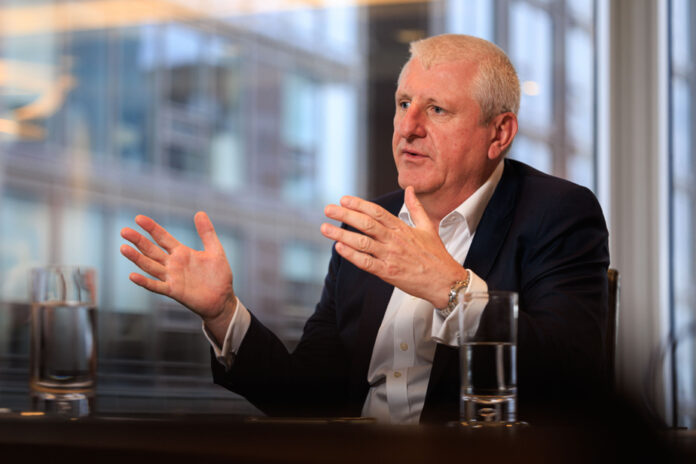After more than four years orchestrating the restructuring of SNC-Lavalin, including taking the company out of the oil and gas sector and winding down its construction business, CEO Ian Edwards is now plotting a comeback. in the acquisition market in order to enhance the group’s presence in the United States and aspire to become one of the top 5 engineering firms there.
SNC-Lavalin unveiled matching financial results last week, posting higher-than-expected profits, which pushed its stock price up 10% on the stock market and the company’s valuation higher. 7 billion.
After hitting a valuation of $10 billion in 2018, the company’s market capitalization plummeted below $4 billion in 2019, in the wake of its legal disputes and serious operational issues.
“Since 2019, we have been working on our transformation, we have ceased our construction activities by ending fixed-price turnkey contracts and we have exited the oil market by selling our activities to Kentz”, explains the CEO of SNC- Lavalin.
Of note, SNC-Lavalin, which had paid 2.1 billion in 2014 to acquire Kentz and enter the oil and gas sector, sold off this division for 10 million in 2021.
“We had to get out of this sector, and we are very happy to be out of it”, puts Ian Edwards into perspective today.
The CEO also points out that the group has completed two of its three remaining construction projects with turnkey fixed price (CMPF) contracts, namely the Toronto and Ottawa light trains which were completed in 2022.
Over the past two fiscal years, SNC-Lavalin has had to absorb cost overruns in its CMPF projects that resulted in a loss of $320 million in 2021 and $261 million in 2022.
“It is now behind us. We still have the REM to complete, but we have not had any major cost overruns to date. The second phase is expected by the end of 2024,” said Ian Edwards.
“We focus our energies in pure engineering services where there is a lot of work to be done with governments that need to modernize their infrastructure. There are massive investments to come in the United States in the field of clean energy and in Canada where nuclear power will enable the electrification of transport, ”says Mr. Edwards.
SNC-Lavalin, which did business in 57 countries in 2019, now makes 80% of its revenue in the United States, Canada and Great Britain. The company sold its division in Scandinavia two weeks ago, which employed 700 professionals, because its presence there was not significant.
However, the strategy that Ian Edwards intends to deploy to expand in the United States is based on the acquisition of small engineering firms whose performance the Montreal company wishes to optimize.
This American shift will take place in 2024, once the company has reduced its debt, which it intends to achieve during the second half of 2023 and in 2024 to be able to deploy its expansion plan thereafter. .
“We will take a very methodical approach, we will not seek to acquire large firms, but to integrate smaller ones which will contribute to achieving organic growth. We are going to use the leverage effect,” explains the CEO.
Last year, SNC-Lavalin hired 2,500 new employees and plans to recruit some 4,000 more in 2023 in all of its markets. Despite a significant reduction in personnel in its CMPF sector, the company’s workforce in Canada has grown from 7,000 to 8,000 in the past two years. The group employs 36,000 people worldwide.
With the offloading of its activities in the oil and gas sector, SNC-Lavalin got out of a thorn, but also decarbonized its balance sheet.
“Today, 50% of our revenue comes from activities related to the decarbonization of the economy. By participating in projects that promote the use of clean energy, we work to create a better future. This is important for the company, but also for the employees who share this vision”, underlines Mr. Edwards.
In Canada, SNC-Lavalin wishes to capitalize on its expertise in engineering services in the infrastructure, mining and metals and nuclear sectors to ensure constant profitability.
Ontario remains fertile ground for SNC-Lavalin’s nuclear division. Already, the province produces 60% of its electricity from its nuclear power plants, and it will need to double its capacity to meet the needs of transport electrification and heating its buildings.
Finally, the CEO does not see the possibility of a recession as a threat to the group’s activities. “Our sector is quite resilient in the face of the risks of a recession, there is a lot of infrastructure work to be done and it will have to be done”, he underlines.















